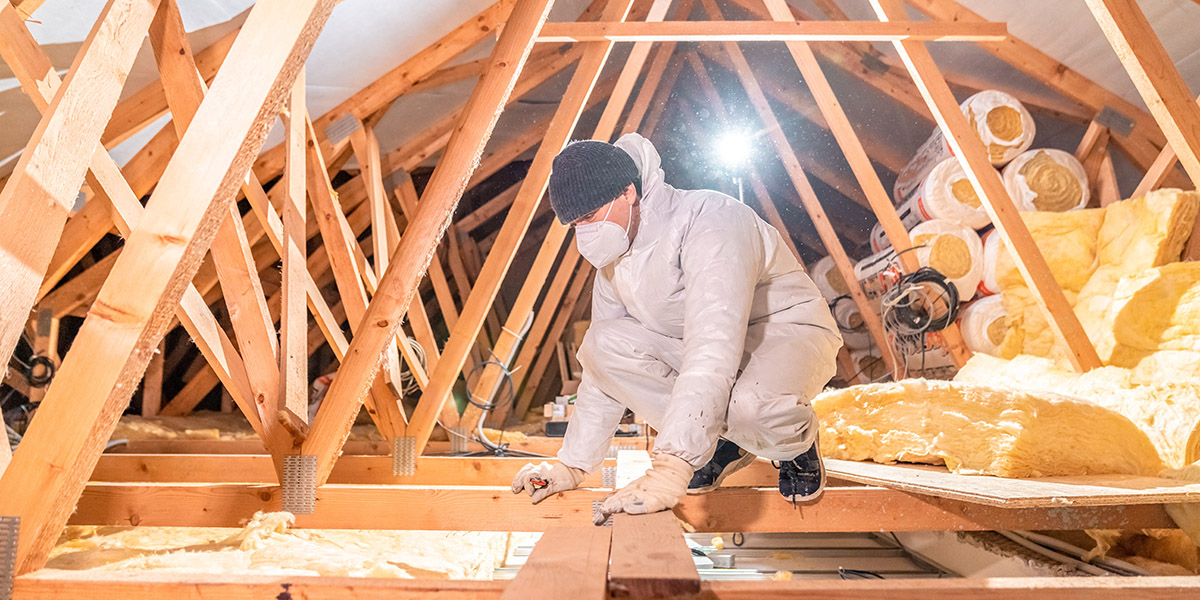Loft Insulation: How it saves money and energy

Key Takeaways
- Loft insulation reduces heat loss through the roof by trapping rising warmth, keeping homes warmer for longer.
- Upgrading to the recommended thickness (about 270mm) can save a typical Scottish home up to £355 per year in heating costs.
- Insulation methods include blanket (mineral wool or fibreglass), loose-fill, and spray foam (though spray foam may be less accepted by some mortgage lenders).
- Proper insulation helps Scotland move toward its net-zero target, by cutting carbon emissions from home heating.
- Beyond energy savings, loft insulation improves comfort (warmer in winter, cooler in summer), reduces noise, and can boost property value.
When it comes to making your home more energy-efficient, one of the simplest and most effective upgrades is loft insulation. With rising energy costs and a growing focus on sustainability, ensuring your loft is well insulated can make a huge difference to both your heating bills and your carbon footprint. If you're looking to save money while keeping your home warm, here’s why loft insulation should be at the top of your to-do list.
How does loft insulation work?
Heat naturally rises, which means that without proper insulation, a significant amount of the warmth generated in your home escapes through the roof. Loft insulation acts as a barrier, trapping the heat inside your home and preventing it from disappearing into the cold Scottish air.
Most homes use blanket insulation, typically made from mineral wool or fibreglass, which is laid between and across the wooden joists in your loft, while loose-fill insulation is another option to consider. Regardless of the method, the goal is the same - to reduce heat loss and keep your home warmer for longer. Another common method of loft insulation, spray foam, is perhaps best avoided due to a reluctance from many mortgage providers to lend against homes with type of insulation.
The money-saving benefits of loft insulation
If your home is currently uninsulated or has old, thin insulation, upgrading to the recommended 270mm thickness could save you a substantial amount on your heating bills. According to Energy Saving Trust, installing or improving loft insulation in a typical Scottish home could save you up to £355 per year on energy costs. Given that loft insulation can last for around 40 years, that’s an impressive return on investment!
Even if your loft already has some insulation, it’s worth checking whether it meets modern standards. Many older homes have insulation that is too thin, meaning they’re still losing more heat than necessary. Topping up your insulation to the recommended depth can make a noticeable difference.
A greener home, a greener Scotland
Scotland has ambitious targets to reach net-zero carbon emissions by 2045, and improving home energy efficiency is a crucial part of this mission. Heating accounts for a large portion of household energy use, and by reducing heat loss, loft insulation helps cut down on the amount of energy required to keep homes warm. This, in turn, reduces carbon emissions and helps the environment.
If you’re keen to make your home eco-friendlier, loft insulation is one of the easiest and most effective ways to lower your household’s carbon footprint. It also works well alongside other energy-saving measures, such as draught-proofing and double glazing, for even greater efficiency.
What are the costs of loft insulation?
The cost of installing loft insulation varies depending on the size of your home and the type of insulation you choose. For a standard semi-detached house, professional installation typically costs between £500 and £1,000. However, if you’re confident with DIY projects, installing loft insulation yourself can be much cheaper - with materials costing as little as £5 per square metre.
It’s also worth checking whether you’re eligible for financial support. Various government schemes and grants are available to help homeowners and landlords improve their property’s energy efficiency, so it’s always a good idea to explore your options before investing.
Additional perks of loft insulation
Beyond saving money and energy, loft insulation has a few extra benefits that are worth considering:
- A more comfortable home - Insulation keeps your home warmer in winter and cooler in summer, helping to regulate indoor temperatures year-round.
- Reduced noise levels - Insulation can also act as a sound barrier, reducing noise from outside and between floors in your home.
- Increased property value - With energy efficiency becoming more important to buyers, having a well-insulated home can make your property more attractive when it comes time to sell.
Final thoughts
Loft insulation is a simple but powerful way to cut energy costs, reduce heat loss, and make your home eco-friendlier. Whether you’re looking to save money, lower your carbon footprint, or simply enjoy a warmer home, investing in proper insulation is a smart move. With the potential for significant energy savings and long-lasting benefits, there’s never been a better time to check your loft and make sure it’s doing its job properly!
For more advice on improving your home’s energy efficiency, stay tuned to ESPC for the latest tips and updates.